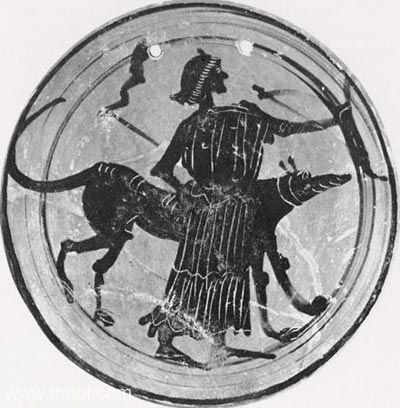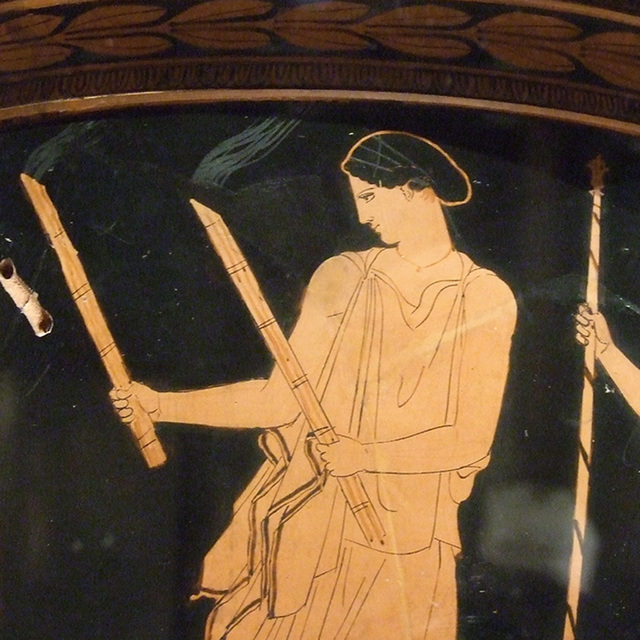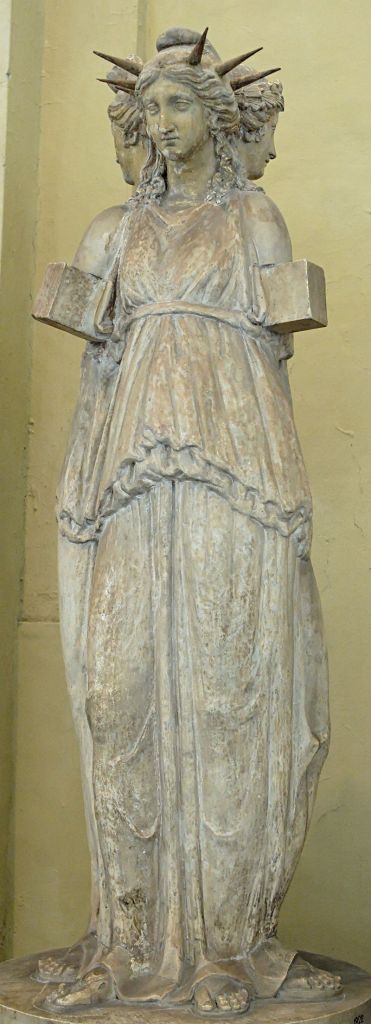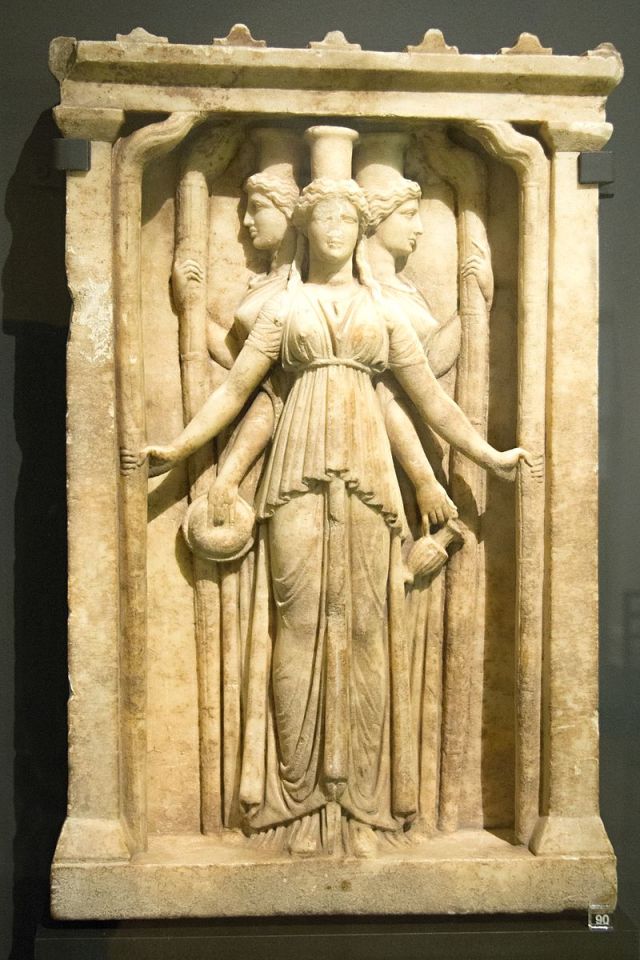One of the very few triple goddesses actually found in the wild (bite me Robert Graves), Hekate is the goddess of magic for the downtrodden. Her origins may lay in Egypt, as the midwifery goddess Heqet/Heket whose name, when translated into English, simply becomes Magic Woman. Heket’s magic seems to have been mostly generative in nature, overseeing the third and final stage of labour and those other transitional moments where life was waiting to burst through — the flooding of the Nile and that moment of perfect ripeness before harvest. The liminal period essential to human survival. Represented by a frog on a lotus leaf, her priestesses were also Egypt’s midwives, putting their worship into practise through that ancient and primal form of magic.

The Hekate of Greece and Rome had a much wider purview. Tripartate goddess of the crossroads, of magic, the moon, the night and the unquiet dead, Hekate was a goddess of the liminal, and of things crossing over where they shouldn’t. Called on by necromancers, who were usually the lowest of the low in Greek and Roman society — women who supported themselves through a mixture of sex work and sex magic, which often required the input of the dead — Hekate is also a goddess of outcast women and taking power where you find it. Medea, Greece’s archetypal witch and betrayed wife, was her most famous priestess, and when it came to curses, the last recourse of the desperate, Hekate was the goddess you called upon.

Her favour and protection over friendless women comes up again in her choice of familiars. Both were once mortal women in distress only to be transformed and raised up by Hekate, given immortality and the respect due to members of a god’s retinue. Hecuba, the black dog, was once queen of fallen Troy and attempted suicide to avoid slavery. Galintha, the polecat, was a midwife cursed by the goddess of childbirth, Eileithyia, as revenge for being tricked into allowing Hercules to be born.
Sometimes Hekate is the daughter of titans, immortal beings displaced by Zeus and his family, who sided against her own people and kept her power in the process. Sometimes she’s the deified priestess of Artemis, Iphigenia, the granddaughter of Zeus, and survivor of human sacrifice who spent decades in exile before being granted immortality. Sometimes she is Artemis, the change in name indicating that she’s fulfilling a different function, revealing the other side of her nature. Hekate is the feminised version of one of Apollo’s epithets after all, meaning “worker from afar,” the perfect name for his sister to use when calling on the dead.

Artemis-Hekate is Artemis’ Chthonic self, the goddess she becomes when she visits the underworld and draws on its power. Most gods belonged to one realm, though many possessed a counterpart in the other; Hades was Chthonic Zeus and Zagreus the Dionysos of the underworld. Persephone, queen of the dead, was a dual natured being who could move between the two worlds like Hekate, a status the two of them helped each other secure. When Persephone was abducted into marriage by Hades, something which should have rendered her entirely Chthonic, Artemis-Hekate helped her mother Demeter to find her, thereby enabling them to negotiate the compromise whereby Persephone would spend half the year with each of them. And then this happened:
“Then Hekatê approached them, the one with the splendid headband.
And she welcomed back the daughter of holy Demeter with many embraces.
And from that day forward, the Lady [Hekatê] became her [Persephone’s] attendant and substitute queen.”
Hekate’s powers over the dead come from her position as a being who passes between the underworld and the world of the living at whim, and from Persephone granting her the power to rule the dead in her absence. Unlike most divine brides, Persephone wasn’t just a consort. Hades had split his power with her equally, something she granted to Hekate during the Spring and Summer months when she went home to see her mother. Obviously there’s nothing explicit in the text, but you have to grant there’s something delightfully queer about that — the already well-established lady-loving Artemis receiving the same position from Persephone that Persephone had just been given through marriage.

The Romans saw Hekate not just as a tripartite being but also as one third of a triad made up of Diana (Roman Artemis) and Selene, another goddess who was often conflated with Artemis. Known as Trivia when appearing in this form, this triad was variously understood as one being with multiple aspects or as three allied goddesses called upon together depending on the believer and the situation. One of the nice things about Greek and Roman polytheism was the space within it for individual interpretation of the divine, and Trivia/Hekate was no different. So long as you paid the gods their appropriate respect, you were fine.
Images and statues of Hekate were often placed over city gates, doorways and anywhere that three roads met in order to invoke her protection as Apotropaia, the goddess who turns away evil. Though sometimes shown as an individual with torches or keys she’s most commonly depicted in one of her triple forms. This could be a group of three women close together, three bodies sharing a single head or as a being with one body but three heads consisting of a dog, a lion and a horse. Graves theorised that these three different animal heads represented the constellations changing over the course of the year, but the Greeks and Romans didn’t feel the need to leave us with an explanation, so we’re guessing at best.
Most households also kept a shrine to Hekate in an attempt to acquire her protection, and propitiated her (along with her legion of unquiet dead) with a small festival known as the Deipnon at the end of each lunar month. In Greece this was the first day of the new moon while in Rome it was on the 29th of each month. A feast, featuring foods like raw eggs and garlic that were traditionally offered to the dead, would be laid out at a “crossroads” where the private grounds of the house joined the street. By morning most of it would be gone, collected up by the poor of the city for themselves, which though the subject of mockery by the wealthy was not punished as an impious act — suggesting that even if not explicit Hekate approved of feeding the living poor as well as those ghosts with no relatives to tend them. Each household would also ritually purify itself by sweeping thoroughly, burning incense in a vessel they would destroy afterwards and disposing of all the household waste. Black dogs might also be sacrificed at this time by families that thought they had extra to atone for, though unsurprisingly modern Hellenic pagans have not revived this part of her worship.
Belief in Hekate, albeit in a different form, continued into the middle ages where the church recast her as the quasi-demonic queen of witches. As ever with medieval accounts of witchcraft it’s hard to tell if anyone worshipped her in this way or if they just believed that other people did, though in the fashion of a self-fulfilling prophecy some may have picked it up after hearing the priests rail against it. There’s even a theory that Aradia, from Leland’s gospel of the witches, a formative neopagan text, is Hekate, her name having evolved over the centuries in the way that oral traditions are wont to do.
We’re currently in the season of the witch and also a time when women’s rights, and the rights of every other marginalised group, seem more at risk than ever. So it might be time to set a table for Hekate on the first night of the new moon or hang her image over the doorway.



Very interesting, thanks for writing. Do you have any thoughts on the pronunciation of Hekate?
Heh-kah-tay. The only other way I’ve heard it pronounced was on Charmed and even as a teenager it made me wince it was so wrong.
I kept thinking about this Charmed episode about Hekate where they eat the stripper before the wedding. So very 90s.
YASSSS!
I’m so glad to see this column again, especially with Hekate!
The part about her relationship with Persephone was quite interesting. I knew they were somehow related in the myth, but did not know that both actually reigned over the land of the dead. It also seems fitting that Hekate was the one to help Persephone keep a liminal nature.
I truly started doing deep research into Hekate TWO DAYS AGO omg get out of my head and also thank you!!!
Would you mind sharing your sources? This is fascinating and I’d like to read more.
Love your articles! They are always so interesting. Can’t wait to until the next one =D
Why no credits on images?
This is balm for my cranky queer feminist witch soul.
She is one of the deities of my childhood. I was that kid that was at the bottom of rung of the pecking order and mythology nerd from an early age so naturally I embraced her as I took power and comfort in my outsider status. If you’re outside the circle, it can’t bind you even if you enter it again because you know how to exist outside of it and nothing can keep really keep you there.
I shared this out on the Hellenion listserv, just as an FYI. If anyone’s looking for some good Hekate music, Daemonia Nymphe has a bunch of albums. “Nocturnal He[c/k]ate” is one of their most awesome compositions.
I read something yesterday about Egyptian Nit/Nut being queer (on a Kemetist’s blog), and then I read that Atlantic piece about the international Asatru community that’s horrified by American white supremacists appropriating their religious symbols in which queer practitioners interviewed said that gender fluidity in the pantheon attracted them to it. And I bought Vanita & Kidwai’s Same-Sex Love in India b/c I found an inexpensive copy. So I’m feeling that at least in my personal experience, there’s a critical mass of queer polytheistic theology and mythology out there right now, and it’s amazing, and I’m optimistic that it’s going to get even better and more accessible to people who need it. ?
Hey can you shoot me the link to the Asatru article? I’d be really interested in reading that.
Yup, here you go! https://www.theatlantic.com/international/archive/2017/11/asatru-heathenry-racism/543864/
I want to add to a bit to what that article said/jump off of…
Full disclosure I’m not Asatru, just a humble writer and singer of the runes which requires being very versed in the lore.
Uh I been trying to gather a nice easy to access trust worthy academic-ish source on something but my google fu is not functioning at the moment but there’s case for Odin’s queerness beyond the basic fact magic and AMAB magic users were queered by Viking society and why that is.
This is best I got:
His initiation and revealing of the runes he hung himself from Yggdrasil and pierced himself with his own spear for 9 days and 9 nights, said this of it:
“Then I was fertilized and became wise;
I truly grew and thrived.
From a word to a word I was led to a word,
From a work to a work I was led to a work.”
-the Rúnatal which is part of the Hávamál in the Codex Regius which is like the half volume of the Poetic Edda but that uh translation is from Norse Mythology For Smart People.
http://freya.theladyofthelabyrinth.com/?page_id=211
Talks about the gender bending of seidr(magic), and Freya who was a teacher of Odin’s in magic as well as war god in her own right with a place (Fólkvangr) for her chosen of the battle fallen.
So basically Odin is not the patriarchal law giver figure white nationalist types want him to be. He’s shamanistic witch-god, prone to tricks, child of jotunn and husband to a Vanir.
Think of the jotunn as forces of nature type spirits or titans.
Also Ragnarok is not a race war or even good vs evil, but a reclamation or resetting of world by nature.
If you want a person to tell you about what runes those racists are appropriating actually mean and why they’d pick that rune to twist for their purposes I volunteer.
Thumbing my nose at those assholes is one of my reasons to live.